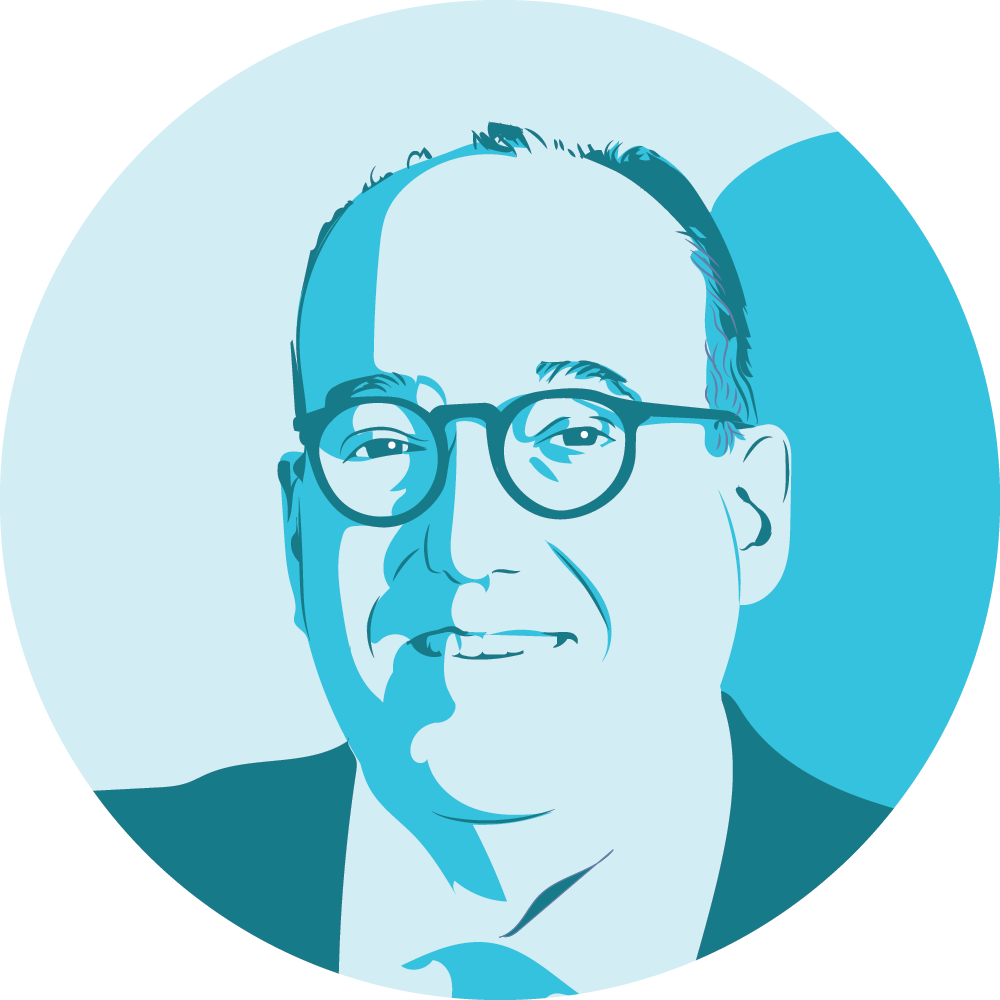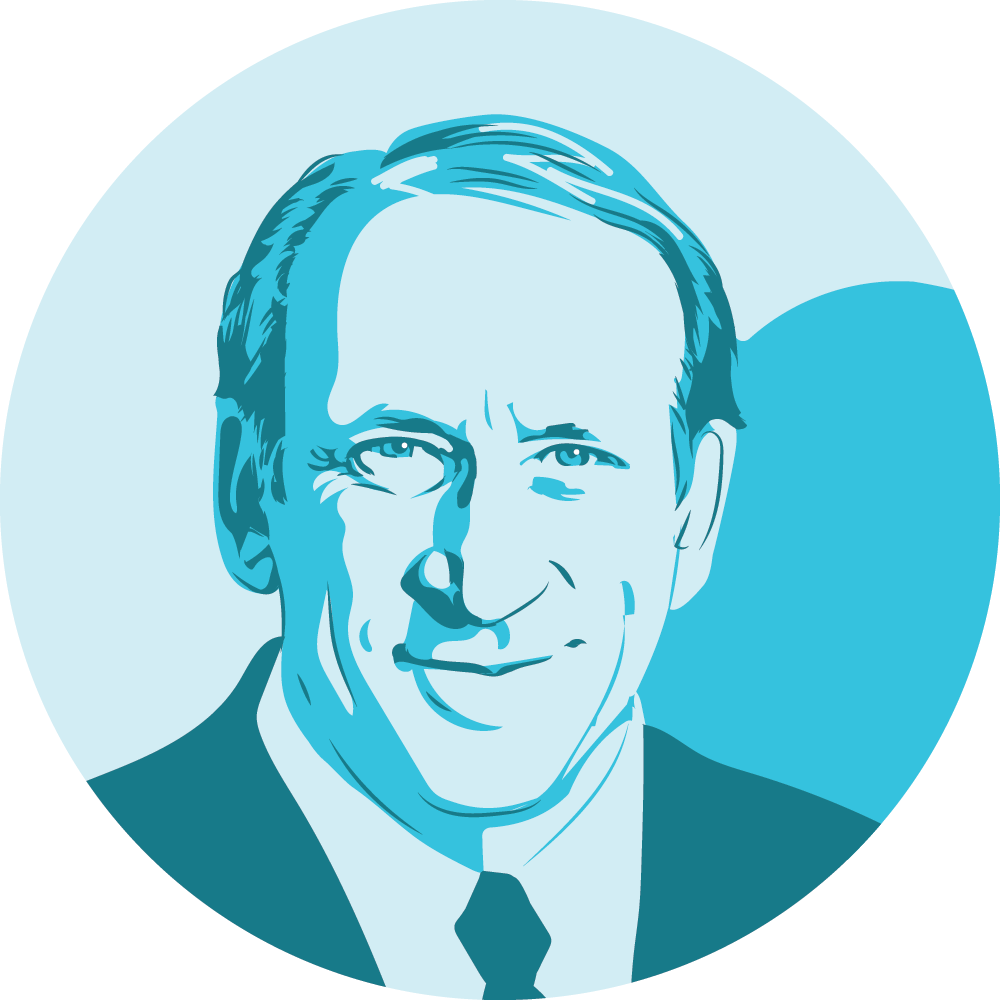
A new role for public media: Local government watchdogs
PART OF A KNIGHT FOUNDATION SERIES ON PUBLIC MEDIA 50 YEARS AFTER THE PASSAGE OF THE PUBLIC BROADCASTING ACT
Whether public media should even exist is a large, almost philosophical question. But if they are to exist, then they should meet the test that applies for any other federal program.

America’s public media are beloved by their viewers and listeners. In an age when most American consumers of news and entertainment are happy to take what they can for free off the internet, public television and radio consumers donate to their local public television and radio stations voluntarily.
But others hold up public media as a wasteful use of scarce federal tax dollars. In the 2012 election, Republican Mitt Romney memorably picked PBS as a prime example of federal funding that he believed ought to be cut. In response, Democrats accused Romney of wanting to “fire Big Bird.”
Whether public media should even exist is a large, almost philosophical question. But if they are to exist, then they should meet the test that applies for any other federal program. The first question in that test: Could this be funded without putting taxpayers on the hook? For PBS, NPR and local public programming, the answer is yes. The private sector can and does provide ample funding for this sort of content. The taxpayer should not be burdened with this task.
However, the private sector seems incapable of providing funding for the particular task that makes the media indispensable in a democracy: accountability reporting that focuses on local government.
This paper explores why NPR and PBS fail the test of worthiness of federal funds. But it proposes, as an alternative to the existing public media system, a new public media that provides something currently in short supply. Public media can be usefully repurposed to fund a network of local watchdog news outlets.
Why federal funding?
Not everything that is good or useful ought to be done or funded by the federal government. Most people meet the vast majority of their needs and wants through other entities, such as the private sector, civil society, nonprofits, and local and state governments. There’s no reason for the federal government to displace or compete with any of these, except under very specific circumstances.
If there is a public good that the private sector, state and local governments, and nonprofits fail to provide, then there is at least an argument for federal involvement. But this is a necessary condition, not a sufficient one. Even when such a public good can be identified, federal involvement might still prove a mistake, because unintended negative consequences of government intervention may sometimes outweigh the public good provided.
So to justify a federal role in media, one must first identify a public good that is not being provided by the free market, nonprofits or other governments.
The current incarnation of public media fails this test on many grounds.
National Public Radio
Public radio does not provide a public good that is unavailable without federal funding.
First, the marketplace has shown many models by which this sort of programming can be profitable.
Second, the demographics of public radio listeners show that they can easily afford to get this content without a taxpayer subsidy.
Third, there are other federal programs that fund humanities and arts.
Americans have an astounding array of options when it comes to audio content.
Most radio listeners get their fix via for-profit terrestrial radio. News channels, sports channels, music channels and talk radio channels bring in millions of listeners. Nielsen estimates that more than 240 Americans, or 90 percent, listen to radio each week. One study found that 65 million millennials in the U.S. – again, 90 percent – listen to broadcast radio every week.[1] And older demographics listen even more.
Broadcast radio stations cover the cost of their talent, their syndicated content, their music royalties and their overhead by selling advertising.
There is no reason to believe public radio could not similarly cover its costs through advertising. National Public Radio, for instance, already includes periodic breaks – brief musical interludes and announcements of corporate and foundation donors – that mimic commercial breaks and provide a respite for listeners’ brains. Replacing these with brief commercials may disrupt the equanimity of NPR listeners, but that ad-free equanimity isn’t a public good. The stimulating content would be unaffected.
Other listeners who don’t want advertisements accomplish that by paying for audio content. More than 31 million people subscribe to commercial-free SiriusXM satellite radio, which has a separate profit model.[2] SiriusXM has been adding more than a million subscribers per year in recent years. For 2016, the company reported revenue of about $5.3 billion and earnings (EBITDA) of $2.0 billion. And cars increasingly come loaded with satellite capabilities, which listeners are willing to pay to activate.
The internet and smart-phone technology provide many other models for the delivery and funding of audio content. Podcasts in particular have found various sources of funding:
Many podcasts are produced by nonprofit organizations, meaning donors (foundations, individuals, and corporations) finance the production and distribution of the podcast.
Media outlets and nonprofits that produce and distribute podcasts often do so in order to expand the audience aware of their organization and website, and to drive traffic to the website, which may sell advertisements.
Some podcasts charge for monthly or annual subscriptions.
Podcasts often have sponsors. Some play a standard radio ad. Others simply mention the sponsor at the beginning or end of the podcast.
“Podcast advertising expanded at a 48 percent rate last year,” Ken Doctor reported at the Nieman Lab in late 2016, “and it’s forecast to grow about 25 percent a year through 2020. By that point, it would be approaching half a billion dollars in annual ad revenue.”
Advertising is also getting more technologically advanced, and thus potentially more effective and more valuable. “Dynamic” advertising – ads tailored to individual users based on user history, location, and other personal information – is increasingly common on podcasts. This technology makes it easier for podcasts to make money off ads.
Public radio is already cashing in here. National Public Media, the sales arm of NPR, sells sponsorships for podcasts, and often these ads are delivered dynamically, based on the profile of the listener.
Indeed, 86 percent of public radio’s funding already comes from non-government sources, according to NPR’s data.[3] More than one third (37 percent) comes from individual donations. Another 20 percent comes from corporations, and 10 percent from foundations. So two-thirds of NPR runs on voluntarily donated money. Of the remaining third, still a majority does not come from government. Colleges and universities account for 12 percent, and “other” (including the sale of NPR-branded goods) for seven percent. The Corporation for Public Broadcasting delivers nine percent, while other government sources provide another five percent.
Recent spats over taxpayer funding of Planned Parenthood have demonstrated that when an institution with sufficient public support loses taxpayer subsidies, private donors step up to fill the gap. Given all the proven sources of funding for audio content – commercials, native ads, dynamic ads, banner ads, the desire for webpage traffic, subscriptions, donations, and more – NPR could easily fill that 14 percent hole through other means.
Further, it’s hard to argue that NPR listeners are especially in need of a taxpayer subsidy. NPR likes to brag about its listeners’ demographics, to demonstrate how important and powerful they are. This very brag-sheet is a sufficient argument against taxpayer subsidy of the stations.
- Seven in 10 listeners have a bachelor’s degree or higher, compared to 28 percent of the U.S. population.
- Seventy-four percent of NPR listeners voted in local, state or federal elections in the past year. The overall turnout rate for the 2016 presidential race was 58 percent.
- NPR listeners enjoy fine arts. In the past year, 20 percent of them attended an art gallery or show (compared to seven percent of the U.S. population) and 38 percent attended a live music performance (75% higher than the U.S. average.)
- Twenty percent of NPR listeners are involved in one or more business purchases over $1,000. And listeners are 162% more likely to be in a professional/managerial role with an individual employment income greater than $35,000.
NPR itself has reported that “Forty-five percent of listeners have a household income of more than $100,000 a year.” By comparison, only about 24 percent of all American households earn that much. In fact, if NPR listeners were a state, it would be the wealthiest, most privileged state in the country. Consider:
In Maryland, the highest-earning state, about 36 percent of households earn six figures, compared to NPR’s 45 percent.
In Massachusetts, 40 percent of adults over 25 have a bachelor’s degree, the highest in the country. That’s far less than NPR’s 70 percent.
Although recent reports lack a number for average income, a 2002 survey listed the mean household income of NPR listeners as $85,675.[4] The national mean that year was $57,852.
Given all this, it’s fairly difficult to justify a taxpayer subsidy for NPR listeners. This is a group more educated and wealthier, by far, than the average American, which already has unequalled access to the arts and intellectual pursuits that public media aim to provide and promote.
It becomes still harder to justify considering that other federal programs already subsidize the arts. The National Endowment for the Arts and the National Endowment for the Humanities have annual budgets of $150 million and $40 million.[5] The NEA issues grants for every type of art, including theater, music, dance, visual arts, folk arts and more. The NEH also issues grants and funds fellowships.
Fine arts also have many other sources of support. Consider billionaires like David Koch and foundations like the Helena Rubinstein Foundation. Local governments and civic groups sponsor summer concert series on town greens across the country. Music and arts academies perform in public for free as a way of providing experience for students and goodwill in their communities.
In short, the goods that public radio currently provides can find all the funding they need outside of the federal government.
Public Television
Like public radio, public television provides content that can be funded without federal support.
When Mitt Romney in 2012 suggested cuts to public broadcasting, Democrats and the news media attacked him for holding a vendetta against Big Bird. Obama’s spokeswoman said “firing Big Bird” was part of Romney’s agenda.[6]
But Big Bird should not be on the federal dole in the first place. He has since proven himself an able-bodied California Condor quite capable of self-subsistence. In a touching story of an avian creature moving from dependency to self-sufficiency, HBO in 2015 purchased the rights to the next five seasons of “Sesame Street.” “Sesame Street” is now being funded by private industry.
Of course, Big Bird has long been in the pay of corporate America, even back during his days on CPB money. From 1995 through 2010, Fisher-Price (a brand of Mattel, the largest toymaker in the U.S.) had exclusive rights to sell Big Bird, Elmo and other “Sesame Street” toys. Beginning in 2011, Hasbro (the second-largest toymaker in the U.S.) acquired exclusive rights to sell the toys.
The more the show is distributed, the more valuable those plush Elmos become. So there’s more than one private sector source of funding for educational children’s programming.
Only about 15 percent of PBS funding comes from the government. The CPB in 2012 listed more than a dozen sources of non-federal funding: “merchandise licensing, digital online advertising, education and state government fee-for-service arrangements, events, renting donor lists to direct marketers, tower leasing, production services, on-demand distribution, content licensing, DVD/CD sales, retail product sales, magazine publishing, book publishing and mobile device applications.”
What we know about PBS’s audience also suggests they can pay for PBS. PBS.org users are 34 percent more likely “to purchase tickets to classical music, ballet or opera performances” than the average American; 25 percent more likely “to spend $200 to $499 on gourmet foods in the last 30 days;” and 16 percent more likely “to spend $10,000+ on travel in the last six months.”[7]
* * *
All of the above suggests that public media could find a more appropriate role than television and radio delivering cultural programming. If the federal government is to fund any sort of media, it should be media that serves a public purpose that the market, nonprofits and local governments are failing to provide.
And that brings us to the steps of City Hall.
The crisis of local news
…the internet still hasn’t been a great equalizer that allowed for a thousand local news outlets to bloom.
“The biggest crisis in America is the crisis of local news,” New York Times Executive Editor Dean Baquet said on a panel in Silicon Valley in May 2017. The Times, the Washington Post, and the Wall Street Journal will be fine, Baquet argued. “We have to figure out the Buffalos, the New Orleans, the Atlantas … so if a school board does something important in a suburb of New Orleans or Atlanta, it’s covered. … I would say to philanthropists and local leaders, you should think of a way to sustain local journalism,” Baquet said, according to media journal Poynter. “I don’t know what that model is.”[8]
For most of American history, local news dominated – even defined – the news media. The big-city newspapers were among the defining institutions of their cities. Times Square, New York’s most famous tourist draw, was named after the New York Times when the daily moved its headquarters there. The Tribune building is one of Chicago’s most notable landmarks. The Inquirer building in Philadelphia remains a coveted and memorable building.
In small and medium towns, the local newspapers were the lifeblood of the town. Gossip, local gatherings, yard sales, home sales, everything went through the local papers. Print advertisements were lucrative. The local department stores ran display ads. The auto section counted on good business from local car dealers. And classified ads – for sale, help wanted, an apartment available, a man seeking romance, a boy seeking lawns to mow, and of course government-mandated public listings (like legal and foreclosure notices) – were incredibly profitable by the inch. It was a stable business.
Craigslist helped kill classified advertisements. The internet helped kill display ads. Newspaper advertising revenue has dropped 50 percent since 2004, from $50 million to about $25 million in 2016, according to the Pew Research Center.[9] This has accelerated as of late: an eight percent drop in ad revenue in 2015 was followed by a 10 percent drop in 2016.
Trade publications have been able to charge subscribers, but this model largely depends on third-party payers: A lobbyist or executive is sure to shell out hundreds of dollars a month to subscribe to Avionics Week if he or she can expense it to the company.
The Wall Street Journal had early and exceptional success in charging a paywall, in part for the reasons above. Subscribers could justify the price tag (to themselves or to a boss) as long as they believe the subscription pays off monetarily. More recently, the major national newspapers – Washington Post and New York Times – have been successful in getting people to pay for their reporting. (Some of this may be liberal readers’ willingness to vote with their dollars as these papers have reported unflattering news about Donald Trump since his election.)
In 2016, the Times added 500,000 digital subscriptions, according to the Pew Research Center (a 47 percent increase) while the Journal grew by 150,000 subscribers (27 percent growth).[10] Nevertheless, the number of subscribers to all newspapers, both online and in print, continued to decline.
“[T]otal weekday circulation for U.S. daily newspapers – both print and digital – fell eight percent in 2016,” Pew noted, “marking the 28th consecutive year of declines.”[11]
Local news has been unable to make ends meet either through paywalls or display ads.
Hopeful enthusiasts for local news had seen the internet as the key to a flourishing local news market. After all, it has lowered barriers to entry across all sectors of the economy. In local news, the internet has nearly abolished the fixed costs that used to require economies of scale. The operation and maintenance of a printing press is no longer necessary; newsprint and ink costs are no longer an issue, and in digital format the paper distributes itself.
But the internet still hasn’t been a great equalizer that allowed for a thousand local news outlets to bloom.
“There is little evidence,” wrote George Washington University media professor Matthew Hindman, “that the Internet has expanded the number of local news outlets.” In a 2011 study, Hindman published these dispiriting findings:
Only one out of every 200 page views on the web goes to a local news site.
There are few successful online-only local news sites. Three of the four most popular, by the percentage of the local market reached, are former print newspapers that have gone all-digital (Seattle PI, Kentucky Post, Tucson Citizen).
National news outlets attract significantly larger online audiences than local outlets, though news traffic overall is still only a small fraction of online activity. Users in the average market spend about an hour per person on national news sites each month. This is more than five times what they spend on local news sites.[12]
Statistics from the labor market reflect this shift. U.S. newspaper employment has halved since 2001, when more than 411,000 people worked in the industry. That number fell by 17 percent over the next seven years, according to the Bureau of Labor Statistics. Then the recession hit, and newspaper employment fell by another 21 percent. In the long recovery of the U.S. economy, another 100,000 newspaper jobs have been lost, leaving only 173,000 newspaper workers as of late 2016.[13]
Some, though not all of this decline has been offset by the creation of 200,000 internet publishing jobs, but this shift has resulted in a geographic shift in media employment. “Today,” Politico authors Jack Shafer and Tucker Doherty wrote in the summer of 2017, “73 percent of all internet publishing jobs are concentrated in either the Boston-New York-Washington-Richmond corridor or the West Coast crescent that runs from Seattle to San Diego and on to Phoenix. The Chicagoland area, a traditional media center, captures five percent of the jobs, with a paltry 22 percent going to the rest of the country.”
This is a consequence both of labor-market realities (clustering has benefits when possible) and demand-side facts: it’s more profitable to go where the money is. As Shafer and Doherty put it:
The places with money get served better than the places without. People in big media cities aren’t just more liberal, they’re also richer: Half of all newspaper and internet publishing employees work in counties where the median household income is greater than $61,000—$7,000 more than the national median. Commercial media tend to cluster where most of the GDP is created, and that’s the coasts.[14]
So the collapse of local news could be called a market failure: The market simply isn’t supporting them.
When local news is a public good
Watchdog reporting on local government also serves a distinctly public purpose. The reader is not the only beneficiary of local news – even the non-reading public benefits. When government is held to account, all citizens benefit, whether they read the paper or not.
Of course, industries collapse all the time, and we often take that as a sign that they were producing something unneeded. If it was necessary, the thinking goes, people would pay for it. Why would local print or web news be any different?
After all, the private sector can still provide some of what the local papers provide. Classified advertisements, for instance, clearly have a market and continue to exist in digital format. People have no trouble getting their weather reports, thanks to for-profit broadcasters and free, ad-based weather websites and mobile apps. Twitter and Facebook allow for much of the peer-to-peer communication that local news used to provide through breaking news items, dueling letters to the editor, and the coupon-rich advertisements from local companies that have traditionally filled the Sunday papers.
Social media also allows community institutions, including churches, schools and civic groups, to get their message out separate and apart from the local paper. Facebook and easy web publishing gives these institutions a direct pipeline to community members seeking information. The Pelham Weekly used to be crucial for telling you what time Christmas Eve Mass would be at Our Lady of Perpetual Help. Today, the parish just puts its bulletin on its home page and shares it on Facebook.
But some things that local papers provided were public goods that the market has not provided, and likely cannot. In particular, markets have little incentive to provide reporting that holds public officials accountable.
Government accountability, after all, is one of the most crucial functions of the press. The First Amendment’s protection of freedom of the press is historically rooted in the story of Peter Zenger, a journalist who was jailed and tried for reporting on the excesses and abuses of New York’s colonial governor. One of the main reasons the Bill of Rights explicitly protects the press is to safeguard its role as a government watchdog.
With local news reporting so eroded, it’s easy to forget its importance. Look around and you can still easily find examples where local reporting made a huge difference. To name just one recent and dramatic example, the work of Willamette Week in Oregon forced Gov. John Kitzhaber to resign in early 2015.
But far more common are the less dramatic but equally important examples of local journalism holding government accountable in smaller ways. I recall several from a two-year stretch in the local life of Washington, D.C., when I was covering national politics at the Washington Examiner alongside a highly capable team of local reporters. I’d like to share just a couple here.
It was Examiner local reporter Alan Suderman who called up county records to see how police and prison guards in Montgomery County, Maryland were spending the tuition money that taxpayers provided for cops to get continuing education and training. It was bad enough that the classes they took on the taxpayers’ dime were often less than academically rigorous – herbology and the like. More disturbing was the apparent kickback scheme that this education fund had spawned as an unintended consequence.[15]
Hundreds of police were using the tuition money to take firearms courses. That might not sound so odd for cops, but Suderman reported (exclusively) that county investigators had found the instructors were buying up $500 firearms, pocketing the $1,000-plus in taxpayer “tuition” for each cop-student, and then selling the guns to the cops for personal use for $50. The instructors got paid and the cops got guns.
After Suderman’s reports in the Examiner, county officials demanded more scrutiny before approval of the continuing education courses.
Another local reporter at the Examiner, Bill Myers, was so feared by the District’s City Hall staff, that one FOIA request found an all-staff email warning that Myers was skulking the halls of the Woodrow Wilson Building, home to the District government. During the 2010 election year, he broke the story of the District government losing DNA evidence in 200 backlogged rape cases. His reporting on the District’s troubled Department of Youth Rehabilitation Services revealed the inordinate number of deaths in custody, and even a riot that the agency had tried to keep quiet, in which several staff at one facility were injured.
Unfortunately, the Examiner folded its local news coverage in 2012, as the advertising model proved unprofitable.
The legwork, combing of records, and development of expertise necessary to hold public officials accountable is not something that can be done on the side. It takes dedicated and skilled full-time reporters.
A “public good,” under the standard definition wielded by economists, must be “nonrivalrous.” That means that my consumption of it doesn’t prevent your consumption of it. We can all enjoy public parks at the same time, for example. This is clearly true of most media, and it certainly includes reporting presented over the internet.
A public good also must be “nonexcludable.” While the internet allows for paywalls, even paywalls can’t hold back its most crucial reported content. The New York Times, Wall Street Journal and Washington Post, which have paywalls, have all broken major stories in 2017. But even if you have to pay to get the full story, the substance of their scoops all quickly ended up on websites that were free of paywalls. The media reality in the current day is that legitimate news is nonexcludable.
Watchdog reporting on local government also serves a distinctly public purpose. The reader is not the only beneficiary of local news – even the non-reading public benefits. When government is held to account, all citizens benefit, whether they read the paper or not. Plus, an informed local populace means an engaged local populace, which means more informed voters and citizens. It also means more accountable local politicians. Some politicians may not love this, but this is clearly a public benefit.
Local government obviously cannot be trusted to carry out the function of holding itself accountable. Nonprofits theoretically could pull this off, but to date this experiment has proven a failure. For instance, a non-profit called the Franklin Center for years fnded statehouse reporters around the country. In 2017, the Franklin Center went under.
Reporting on local government, then, meets the threshold test for federal government support. It fits the definition of a public good, and it is not being and arguably cannot be provided by the private sector, nonprofits or local governments.
The mere fact of meeting this threshold does not in itself imply that it is necessarily a good idea for the federal government to fund it. But it does mean that it might be a good idea. We couldn’t know for sure without trying it out somewhere.
Proposing the Civic Accountability Corporation and Civic Observers
The first step in creating a new public media system would be demolishing the current system. PBS, NPR and American Public Media should be dismantled, their assets sold, their spectrum auctioned off, and their journalists eased back into the labor market.
The most popular and beloved shows in public media (“This American Life,” “A Prairie Home Companion,” “Wait, Wait Don’t Tell Me,” and probably even the old reruns of “Car Talk” that many NPR stations still run) will easily find homes on other radio syndicates, funded by advertisements, sponsors or some sort of subscription model.
And public media reporters with experience and connections in covering local government could be given priority jobs in the new public media.
Replacing the Corporation for Public Broadcasting will be the Civic Accountability Corporation. CAC will be funded by annual appropriations from Congress. And it will have no editorial control over the local journalism outfits – call them Civic Observers or COs – that it funds.
CAC could either establish and incorporate these COs or allow current newspapers or nonprofit entities to apply for CO status. Just as the CPB describes its role as “to shield stations from political influence,” so will the new CAC serve as a firewall – a necessary precaution whenever taxpayer money is involved.
The COs will operate as nonprofits with total editorial freedom, within the broad realm of covering local government. Local governments and state governments will have no role in, and thus no say over, the funding of such outlets.
The CAC will provide back-end support for those COs that do not have support staff. This can include arranging web hosting, legal defense, human resources support, content-management systems and assistance in credentialing. The CAC can also fund nonprofits that provide professional development for journalists, such as FOIA tutorials, investigative journalism techniques, accounting and statistics classes (journalists are not known for their numeracy, unfortunately).
The network of COs would be far more valuable. Especially because they won’t be competing with one another (they will be nonprofits who generally cover different turf), they can exchange best practices, provide story ideas and share information that would help all to thrive.
That would begin with the workaday role of attending town hall meetings and subcommittee hearings of city councils. The COs could also comb through municipal finances, file Freedom of Information requests, and take the time to actually read proposed legislation before it passes. They could also pore over mayoral and municipal campaign finance and personal financial disclosures.
The most sensible publication format for COs would be online only, though some limited print distribution could make sense in certain markets. For instance, a small print run for distribution at a retirement home could put the reporting in front of a readership that may be less web-friendly. Similarly, free copies of a print newspaper could make sense out front of a subway system where riders don’t have access to data underground.
But in general, free online distribution makes the most sense, reducing overhead costs.
A CO would be a desirable place for a young journalist to work. Working on a smaller stage, he or she would acquire valuable reporting, investigating and writing skills, while also learning how to be tough on politicians.
Counterarguments
Local watchdog reporting has a much better claim to federal funding than do potentially profitable enterprises like “Sesame Street,” “All Things Considered” or classical music. But there are still reasons to be wary of federal support for a town hall sleuth.
For the most part, the U.S. has practiced separation of press and state, and it is the breaching of this wall of separation that makes public media such a political lightning rod in the first place. Americans are generally live-and-let-live people, but when their own tax dollars are involved, they get worked up about how they’re spent.
This is why the NEA’s Mapplethorpe exhibit and Andres Serrano’s “Piss Christ” drew so much ire. People felt they were forcibly made complicit in something they found sacrilegious or obscene.
Any public media will have this problem. That’s a good argument for shifting from the cultural and opinionated NPR and PBS to straight news reporting, as proposed above. But also it’s a warning that any incarnation of public media will be more contentious than private media.
Another downside of publicly funded media is that politicians will want to meddle. Congressmen will hear an earful from mayors, city councilmen, sanitation commissioners, and school board presidents back home who are very displeased with their coverage in the local Civic Observer publication.
A local government watchdog whose reporting is censored or chilled in any way by government funders could be worse than no watchdog at all. It could instill a false sense of confidence in a corrupt local government, implying that someone is keeping a vigilant eye on local officials. Also – even if it seems strange to argue that the labor market is excessively tilted in journalists’ favor – it could drag reporting and editorial talent away from other local outlets.
Competition with private newspapers is another potential problem. While local news is nationally in crisis, it is not everywhere in crisis. Some cities and counties still have robust local newsgathering operations, and a new government-funded news source could harm existing private sector news sources and even put some of them out of business. Replacing a private sector news source with a government-funded one would hardly be an improvement.
Finally, with Medicare and Social Security shelling out more than they take in, the national debt above $13 trillion, a 2017 deficit of more than $400 billion, all despite high tax rates, there’s a good argument for simply abolishing noncritical federal programs like public media, rather than reforming them.
All of these counterarguments have at least some merit, yet none is so strong as to suggest that this proposed reformation of public media should not be tried out in a few underserved communities on an experimental basis. Public media don’t currently have a large effect on the deficit, and they wouldn’t under the new regime. If the CAC properly prioritizes the jurisdictions where it will establish CO’s, and works to award the status to existing local papers where it makes sense, then the problem of competition undermining private media will not be a serious one. And as for potential political meddling, this new system would at least not make matters any worse than they are currently.
The Experiment
The best way to proceed toward this new public media model will be by trying it out in a small number of localities. This will help illuminate what sort of effects – expected and unexpected – it might have.
Congress would have to authorize a temporary, small scale CAC to run this experiment. The first step is to identify a handful of communities that differ from one another (some rural, some urban, some wealthier and some poorer, etc.) where additional funding for coverage of local government seems especially appropriate. Where a suitable private partner cannot be found, a new one can be incorporated.
Meanwhile, the experiment can cover more than just the Civic Observer publications themselves. If possible, public television and radio affiliates in the experimental markets should be granted a temporary waiver from FCC rules against noncommercial broadcasters selling advertising. This way, even as the COs try to demonstrate their worth and capabilities in covering local government, the affiliates of the old public media regime would have a free opportunity to figure out how commercially viable their product is, and how much advertising they would have to sell in order to operate as a commercial enterprise while carrying the standard cultural content for which American public media are already famous.
Based on the lessons from this experiment, Congress and policymakers will have a clearer idea of whether it is viable at all; whether it works better in some places than others; and whether it has unintended consequences that complicate matters. If the COs perform well, attract a community following, and find their stories picked up by larger outfits, public media reform will become a much easier idea to sell to Congress.
Author bio:

Timothy P. Carney is a visiting fellow at the American Enterprise Institute, the commentary editor of the Washington Examiner, and the author of two books. Tim was a 2012 Pulliam Distinguished Visiting Fellow at Hillsdale College and he sits on the board of visitors for the Institute for Political Journalism.
A protégé of the late columnist Robert Novak, Tim was senior reporter at the Evans-Novak Political Report and became editor when Novak retired in 2008. His work has appeared in the Wall Street Journal, New York Post, and many other publications. He is author of Obamanomics (2009) and The Big Ripoff (2006), which won the Templeton Enterprise Award from the Intercollegiate Studies Institute and the 2006 Lysander Spooner Award for the “best book on liberty.” Tim is a native of Greenwich Village and an alumnus of St. John’s College in Annapolis. He now lives in the D.C. area with his wife and six children.

Timothy Carney
Visiting Fellow, American Enterprise Institute

Mike Gonzalez
Senior Fellow, Heritage Foundation
Melody Kramer and Betsy O’Donovan
Wikimedia Foundation and The Daily Tar Heel (respectively)
Footnotes:
[1] Alex Pham, “65 Million Millennials Listen to Radio Each Week (Study),” Billboardbiz (February 2014). http://www.billboard.com/biz/articles/news/digital-and-mobile/5908249/65-million-millennials-listen-to-radio-each-week-study
[2] Sirius XM, “SiriusXM Exceeds 2016 Subscriber Guidance; Issues 2017 Subscriber and Financial Guidance,” (January 2017). http://investor.siriusxm.com/investor-overview/press-releases/press-release-details/2017/SiriusXM-Exceeds-2016-Subscriber-Guidance-Issues-2017-Subscriber-and-Financial-Guidance/default.aspx
[3] National Public Radio, “Public Radio Finances,” http://www.npr.org/about-npr/178660742/public-radio-finances
[4] NPR, “NPR Audience Profile,” https://cache.trustedpartner.com/docs/library/000316/NPR%20Jazz%20Demographics.pdf
[5] National Endowment for the Humanities, ”NEH Statement on Proposed FY 2018 Budget,” (May 2017) https://www.neh.gov/news/press-release/2017-05-23; National Endowment for the Arts, “National Endowment for the Arts Appropriations History” https://www.arts.gov/open-government/national-endowment-arts-appropriations-history
[6] Maryalice Gill, “Presidential politics goes to Sesame Street: Obama says Romney wants to fire Big Bird,” Politifact. (October 2012). http://www.politifact.com/new-hampshire/statements/2012/oct/09/barack-obama/obama-says-romney-wants-fire-big-bird/
[7] National Public Media, “Meet The Pbs.Org User” http://nationalpublicmedia.com/pbs/ audience/
[8] Jim Warren, “New York Times editor: Local news is the biggest ‘crisis’ in journalism,” Poynter (May 2017). https://www.poynter.org/news/new-york-times-editor-local-news-biggest-crisis-journalism
[9] Pew Research Center, “Despite subscription surges for largest U.S. newspapers, circulation and revenue fall for industry overall,” (June 2017). http://www.pewresearch.org/fact-tank/2017/06/01/circulation-and-revenue-fall-for-newspaper-industry/
[10] Ibid
[12] Matthew Hindman, “Less of the Same: The Lack of Local News on the Internet,” (2011): 11. https://apps.fcc.gov/edocs_public/attachmatch/DOC-307476A1.pdf
[13] Bureau of Labor Statistics, “Newspaper publishers lose over half their employment from January 2001 to September 2016,” (April 2017). https://www.bls.gov/opub/ted/2017/newspaper-publishers-lose-over-half-their-employment-from-january-2001-to-september-2016.htm
[14] Jack Shafer and Tucker Doherty, “The Media Bubble is Worse Than You Think,” Politico, (May/June 2017). http://www.politico.com/magazine/story/2017/04/25/media-bubble-real-journalism-jobs-east-coast-215048
[15]Alan Suderman, “Montgomery employees taking religion courses on county dime,” Washington Examiner (September 2009). http://www.washingtonexaminer.com/montgomery-employees-taking-religion-courses-on-county-dime/article/22552
